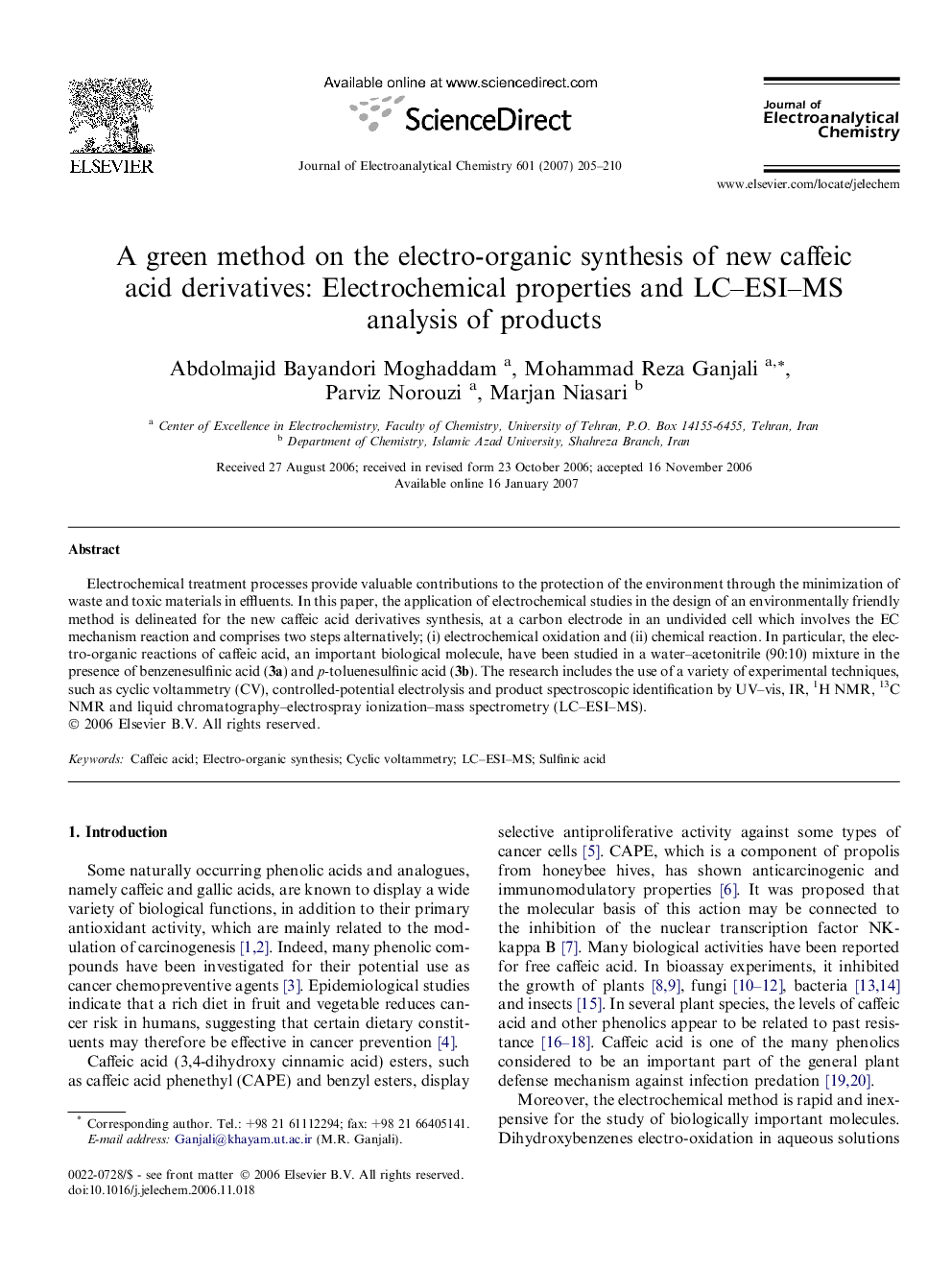| Article ID | Journal | Published Year | Pages | File Type |
|---|---|---|---|---|
| 221250 | Journal of Electroanalytical Chemistry | 2007 | 6 Pages |
Electrochemical treatment processes provide valuable contributions to the protection of the environment through the minimization of waste and toxic materials in effluents. In this paper, the application of electrochemical studies in the design of an environmentally friendly method is delineated for the new caffeic acid derivatives synthesis, at a carbon electrode in an undivided cell which involves the EC mechanism reaction and comprises two steps alternatively; (i) electrochemical oxidation and (ii) chemical reaction. In particular, the electro-organic reactions of caffeic acid, an important biological molecule, have been studied in a water–acetonitrile (90:10) mixture in the presence of benzenesulfinic acid (3a) and p-toluenesulfinic acid (3b). The research includes the use of a variety of experimental techniques, such as cyclic voltammetry (CV), controlled-potential electrolysis and product spectroscopic identification by UV–vis, IR, 1H NMR, 13C NMR and liquid chromatography–electrospray ionization–mass spectrometry (LC–ESI–MS).
